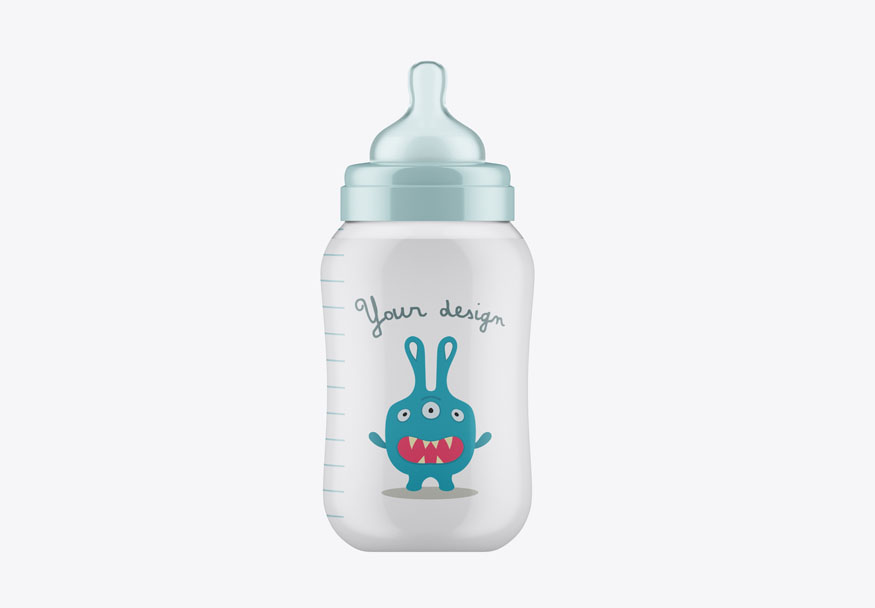Introduce a bottle to a breastfed baby around 3-6 weeks, establishing breastfeeding. Paced bottle feeding helps prevent overfeeding. Follow your baby’s cues for a smooth transition. Be patient, and your baby can adapt while benefiting from the lifelong health rewards of breast milk.
Why Supplement with Bottles
There are many reasons parents supplement breastfed babies with bottles:
- So others can feed the baby to give mom a break
- If using pumped breast milk to allow mom to leave the baby
- When transitioning to a formula
- If advised by a doctor due to weight/medical concerns
- If mom needs to return to work or be away from the baby
When to Introduce a Bottle
Establishing Breastfeeding First
Wait until breastfeeding is well-established, typically 3-6 weeks, before introducing a bottle. This ensures a solid start to breastfeeding, the establishment of the mom’s mature milk supply, and the development of a good feeding rhythm between mom and baby.
Signs breastfeeding is going well before starting bottles
- Baby is gaining weight appropriately
- Adequate number of wet and dirty diapers
- Mom’s milk supply feels plentiful
- Baby is generally satisfied after feeding
- Comfortable and pain-free feedings for mom
- Starting too early with bottles can lead to nipple confusion and negatively impact supply earlier than desired. Once breastfeeding is established, most babies can transition smoothly with the right techniques.
Baby’s Signs of Readiness
In addition to the timeframe guideline, watch for the following signs that the baby may be developmentally ready to try a bottle:
- Opens mouth wide when feeding
- Coordination to suck and swallow efficiently
- Ability to move the tongue up/down and extend it over the lower gum
- If introducing a bottle is too early, the baby may struggle with a poor latch, faster flow, and keeping milk down, leading to possible gagging or choking. Wait until you see signs of nipple readiness described above before trying.
How to Introduce a Bottle
Start Slowly
Introduce the bottle gradually with 1-2 oz when the baby is alert but not overly hungry, ideally 30-60 minutes after breastfeeding. Pay attention to signs of fullness, as the bottle flow may be faster. If the baby doesn’t finish, don’t force more; let them set the pace, increasing gradually to 2-3 oz.
Paced Bottle Feeding
Paced bottle feeding is an important technique for babies to control intake volume when transitioning from breast to bottle. It helps prevent overfeeding and mimics some aspects of breastfeeding.
Here’s how to pace bottle feed your baby
- Hold baby in an upright, seated position (not lying down)
- Gently tickle lips to encourage opening, then let baby draw nipple completely into the mouth
- Keep the bottle horizontal to avoid excessive flow
- Tip-up the bottle to fill the mouth, then tip it down once you see effortful swallowing slowly.
- Offer short 1-3oz breaks during feeding by putting the nipple to the chin and then reinserting for more.
- Watch for fullness cues just as you would at breast
- This start-and-stop technique lets them cue you when getting full, resulting in a more controlled, comfortable feed.
What Milk to Put in the Bottle
Your Expressed Breast Milk
Start with breast milk, freshly pumped or from the frozen stash, for initial bottle feeds to maintain flavor and nutrient consistency. Use quantities pumped per feed to align with the baby’s intake and avoid adding excess, which may affect supply regulation.
If giving breast milk in a bottle, have caregivers strictly adhere to storage guidelines:
- Fresh milk good at room temp for 4 hours max
- Store in refrigerator for 5 days max
- 6-12 months in freezer
- When transitioning to formula, combination feed with formula mixed with breast milk can help the baby adjust to a new taste/texture before switching completely.
Formula Supplements
Opt for a formula resembling breast milk composition if supplementing. Transition formulas are gentler on a baby’s system. Consult the pediatrician for suggestions. Prepare only what’s needed per feeding to prevent bacterial risks. Follow formula label instructions strictly for preparation and storage.
Bottles and Nipples for Breastfed Babies
Choosing the right bottle and nipple is key to making bottle feeding as seamless as possible:
Bottles
- Newborn flow (not Standard flow)
- Preemie or Ultra Newborn nipples
- Slow-flow options
- Angled bottles allow semi-upright feeding
Nipples
- One hole (not multiple holes)
- Softer, more flexible material
- Breastfed baby or Natural Shape
- Variable-flow to adjust speed
- This combination minimizes nipple confusion and maintains control of flow/pace to mimic breastfeeding. Always check proper nipple sizing to ensure a good latch and minimize swallowing air.
Avoiding Common Problems
Nipple Confusion
Nipple confusion is one of parents’ top concerns when bottle-feeding a breastfed baby. Babies that constantly switch between bottle and breast may struggle to latch as the sucking action differs. However, you can prevent confusion by:
- Not introducing a bottle until 3-6 weeks
- Choose slow-flow bottle/nipple options
- Maintain skin-to-skin contact during feeds
- Offer breast first before bottle at each feed
- If the baby refuses the breast, keep trying while eliminating one bottle of feed at a time. Contact a lactation consultant if needed for additional support.
Impact on Milk Supply
Switching too early from breast to bottle can also negatively signal your body to produce less milk. Ensure you breastfeed regularly 8-12 times in 24 hours before reducing sessions.
The following can help maintain supply:
- Only replace 1-2 feedings maximum with an occasional bottle
- Pump when baby gets a bottle to send a signal for production
- Ensure proper flange/pump fit to maximize output
- The power pump occasionally mimics cluster feeding
- Track diaper output or weigh the baby before/after breastfeeding to monitor changes. If you see a supply drop from introducing bottles, remove them and keep stimulating production through pumping and nursing on cue.
Gas and Reflux
Air swallowed from bottle feeding can cause gassiness, spit-up, discomfort, and fussiness. To help avoid:
- Hold baby vertical for feeds and burp frequently
- Ensure the nipple has proper air venting
- Try different bottles/nipples if the excess air intake
- Check nipple sizing, allowing deep latch
- If reflux or discomfort persists, discuss options with your pediatrician, such as probiotics, positional changes after feeding, or, in severe cases, medication.
Ear Infections
Avoid laying the baby flat with a bottle to prevent milk from entering the Eustachian tubes and causing infection. Hold the baby upright, take paced feeding breaks, and tilt the bottle to minimize liquid pooling. If ear-related symptoms like tugging, fever, or congestion arise, check the ears and consult about antibiotic options for treatable infections.
Overfeeding and Obesity
Bottles make it easy to overfeed an infant as you can’t assess fullness as easily. Stick to hunger/fullness cues over volume; remember, a baby’s stomach is tiny!
Rapid weight gain in infancy is linked to higher obesity rates. Adhere to pace feeding rules, respect when baby stops, and avoid pressure tactics getting them to finish. Don’t exceed recommended daily limits without medical guidance.
The Key is Patience
Transitioning breastfed infants to a bottle takes patience as you learn the baby’s cues. Expect some fussiness, refusal of bottles, possible impacts on supply, or temporary nursing strikes. With consistency, time, and the techniques above, the baby should take to bottle feeding without sacrificing the amazing benefits of your breast milk!
For more such informational blogs, Visit EuroKids











